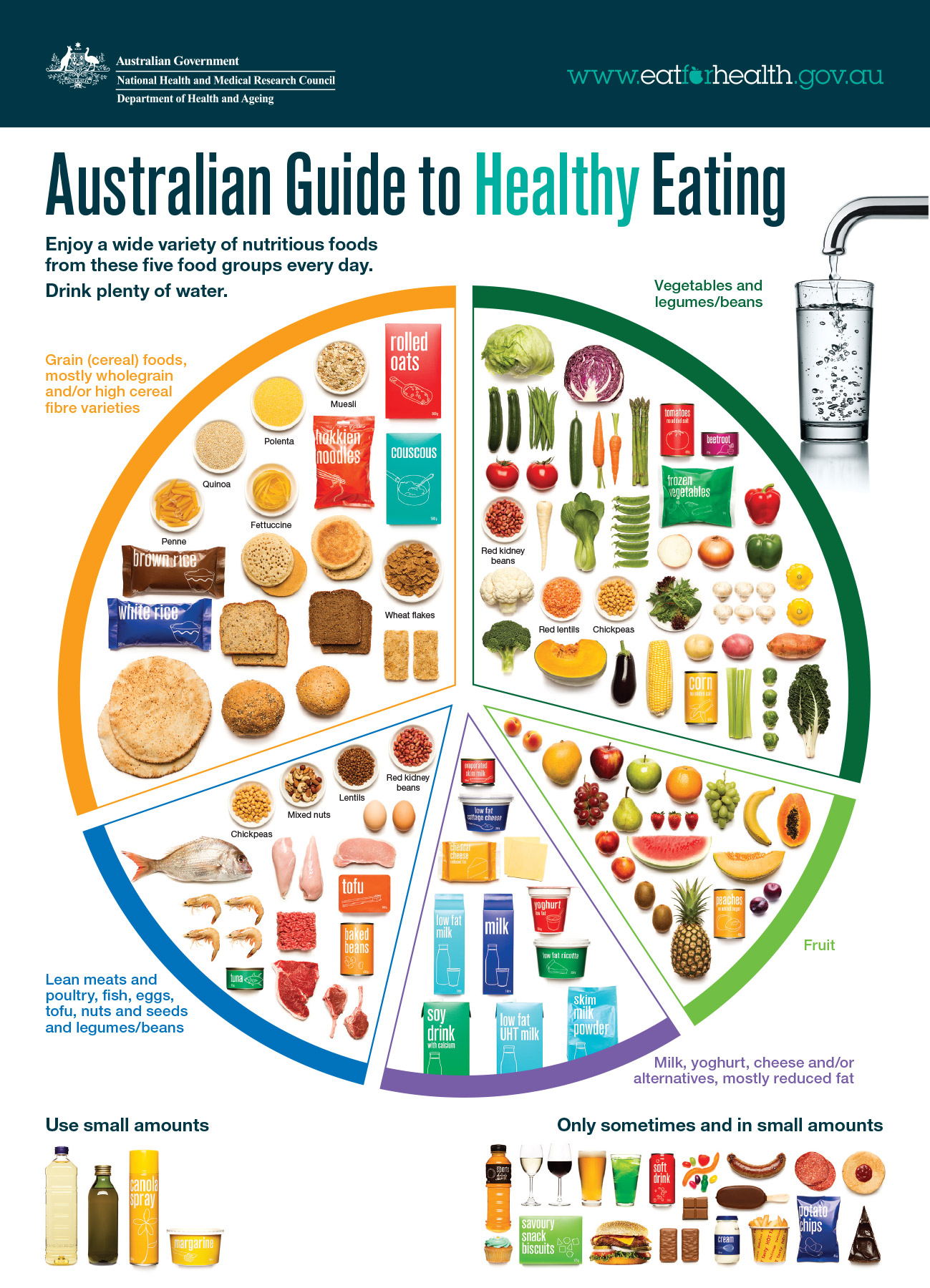
Many families rely on school canteens to regularly contribute to their children’s food intake. It is important therefore that canteen menus are able to make a positive health contribution to children’s diets.
When planning a menu for the canteen, there are many factors that should be taken into consideration, including the size of the school, number of lunches prepared, the number of people who work in the canteen and their level of expertise in preparing food, and the equipment available. The menu should reflect the Australian Dietary Guidelines.
The Australian Dietary Guidelines give advice on eating for health and wellbeing; they include:
- Guideline 1: To achieve and maintain a healthy weight, be physically active and choose amounts of nutritious food and drinks to meet your energy needs
- Guideline 2: Enjoy a wide variety of nutritious foods from the five food groups every day
- Guideline 3: Limit intake of foods containing saturated fat, added salt, added sugars and alcohol
- Guideline 4: Encourage, support and promote breastfeeding
- Guideline 5: Care for your food; prepare and store it safely.
Emphasis should be given to the following foods that contribute significantly to meeting students’ nutritional needs:
- Breads and cereal foods e.g. rice, pasta, especially wholegrain varieties
- Fruit – preferably fresh, but including frozen and canned
- Vegetables – fresh, frozen and canned
- Reduced fat varieties of milk, cheese, yoghurt, soy
- Lean meats, skin-free poultry, fish, eggs, baked beans and other legumes
- Plain water
More information can be found on the Eat for Health website. And in these factsheets
Many canteens prepare food from scratch on site. This is a great way to make use of fresh seasonal produce and specials, ensure items are within your budget (and that of student spending) and are healthy. Visit the Canteen and Tuckshop association websites in your state or territory who will provide you with recipes and ideas that are suitable for schools.


